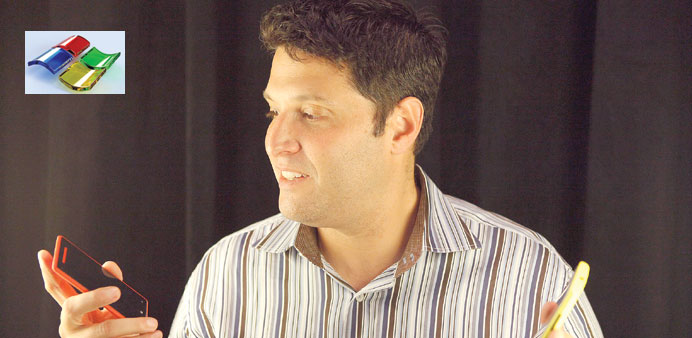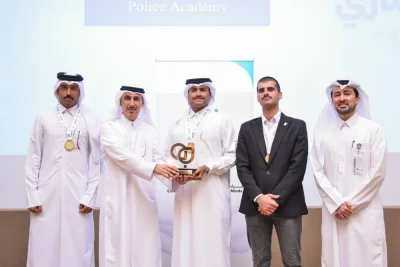FAST: Terry Myerson, who has led the consolidation of the teams building the various versions of Microsoft’s Windows, and risen to the top quickly.
By Matt Day
Windows 10 is the latest and biggest proving ground of whether the new Microsoft is better at building software than the old one.
Last week’s release of the newest version of the company’s operating system comes with typically high stakes. Microsoft, based outside Seattle, has in the past two years turned over a majority of its top executive ranks, slashed tens of thousands of jobs and deployed a new organisational structure and philosophy designed to push the company’s units to collaborate, rather than compete.
In Windows 10, those changes have resulted, among other things, in a faster browser to replace the bruised Internet Explorer, a built-in voice-activated digital assistant and search tool, and a return of the traditional Start Menu, which took a back seat in the interface of Windows 8.
Microsoft executives are hoping that Windows 10, built with the aid of more consumer feedback and a development approach that emphasised user-friendly design from the start, will lift the fortunes of the company’s most famous product.
“If you go back in time, we really ran Microsoft as sort of independent businesses,” Terry Myerson, the executive vice president who led the development of Windows 10, said in an interview. “Xbox was a different business than Windows, which was a different business than Phone. Now we’re thinking about the Windows ecosystem. You put this group of people in one room together and say, all right, now we’re going to go build a project.”
RISING FAST
The 42-year-old Myerson, who led the consolidation of the teams building the various versions of Microsoft’s Windows, is among a newer generation of executives whose stature has risen quickly with the changing of the guard. He went in two years from leading development of Windows Phone to heading the engineering and development of Windows to becoming one of CEO Satya Nadella’s top lieutenants.
As of June, he also has oversight of Microsoft’s range of hardware groups.
Myerson’s more collaborative mandate contrasts with the Microsoft of old, a combative place that drew on the intensity of co-founder Bill Gates and, later, Chief Executive Steve Ballmer, and was structured to foster competition. Windows and Office, for example, ran as separate businesses vying for the attention of consumers.
Steven Sinofsky, the former executive who headed the development of Windows 7 and Windows 8, gained a reputation as a skilled practitioner of that sometimes sharp-elbowed culture. Windows 8 was developed as its predecessors had been: largely behind closed doors.
But that software’s bold, touch-screen-optimised interface, which jettisoned the Start Menu, proved to be a step too far for many consumers, a point that was clear after preview versions were released.
“When people really started using it and sending us feedback on what they wanted to see change, it was really too late” to make major revisions, said Gabe Aul, then a manager in the Windows quality, reliability and feedback group.
Sinofsky left Microsoft a month after Windows 8 was released to mixed reviews. A major update to the software, Windows 8.1, debuted less than a year later.
Early in the development of the successor, Windows 10, Aul and his colleagues drew up a proposal for a program to incorporate more user feedback earlier in the development process. Microsoft would invite up to 250,000 people to use early versions of Windows and share their opinions on an ongoing basis with the engineering teams working to finish the product.
Myerson rejected the idea of a cap on the program. It should be open to all who wanted to participate, he said.
Why cap a connection between developers and customers, Myerson asked. “Let them talk to each other. Listen, iterate, improve,” he said.
Ultimately, Microsoft said, more than 5 million people downloaded previews of Windows 10.
Microsoft’s transformation toward a more team-oriented organisation began under Ballmer, who in 2013 ordered the consolidation of the company’s far-flung marketing, finance and engineering teams.
The separate groups that built versions of Windows for PCs, smartphones and business devices were combined into one unit, resulting that fall in the largest physical shift in the company’s history, as thousands of developers, designers and marketers moved around the campus over eight weeks.
Myerson was then leading the Windows Phone unit, which won praise for its user-interface design but hadn’t fared well in the marketplace against dominant Google and Apple smartphone operating systems. Ballmer picked him to lead the consolidated overall Operating Systems Group.
“You’d never seen the company organise in that way,” said Chaitanya Sareen, a principal program manager who oversees a user-interface team with Windows.
That also meant big changes for the way thousands of people built Windows 10.
Under the old model, “feature teams” — the dozens of groups building components of Windows — would make a preliminary plan, run it by a user-research group, then sit down to the work of coding the feature.
“Then they’d come back and say, ‘Here’s what we made. Do you like that?’” Aul said.
During the development of Windows 10, Microsoft developers saw the feedback that was pouring in throughout the process. “It directly influences planning,” said Aul, now the general manager overseeing the Windows quality and reliability team and the public face of the development process. “It’s just completely embedded in their daily process.”
OUTSIDE FEEDBACK
For Sareen’s team, that feedback was taken to an extreme when engineers couldn’t decide how to present open programs in a tool that lets users switch between desktops. The decision was left to the army of outside testers, who were asked to rate two possible options.
It’s not just people outside the company who had more of a hand in Windows’ development.
In previous desktop versions of Windows, designers and marketers were looped into the development process after much of the software coding was complete, a practice that Microsoft managers admit led to marketing messages and design concepts that shared little in common across products.
This time, designers and marketers got involved early, sitting in on planning meetings and monthly engineering reviews.
“I thought engineering would be terrified,” said Aaron Woodman, a marketing director with Windows. But the results, he said, should speak for themselves.
Microsoft’s engineers had planned to incorporate support for a feature that allows users to log in with fingerprint and iris-scans, avoiding the pitfalls of hackable passwords. The tool, essentially a security feature that might hold little appeal beyond information- technology departments, didn’t need a name.
Instead, after the collaboration with other teams, the feature was introduced to the world as “Windows Hello.” After verifying its user’s identity, the tool welcomes its user by name, flashes a smile and a wink, and unlocks Windows.
“Great products have the ability to connect functionally and emotionally,” Woodman said.
Myerson sees that connection at home. His daughter’s favourite feature of early versions of Windows 10 is the voice-activated Cortana digital assistant, which Microsoft has tried to make spunkier and more accessible than the chatty tools offered by rivals.
If Microsoft gets it right, Myerson says, Windows will be a hub that connects software and hardware to make each more powerful, whether for a girl in Washington state asking questions of a digital assistant while playing games or for a technology consultancy in India betting its business on Microsoft software.
“The scale of Windows is pretty …,” Myerson said, trailing off. “It’s different. We’re not building a product. We’re building an experience that’s larger than the product.”



